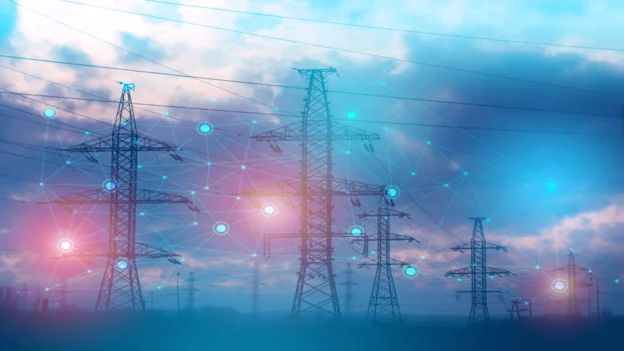Technological advances in the digital domain are increasingly remarkable, spanning from the latest mobile devices to promising developments in fields such as medicine and engineering. Within the energy sector, digital transformation is no longer a distant aspiration— it has become a strategic imperative. Artificial Intelligence (AI) has emerged as a pivotal tool for enhancing operational efficiency across various segments, optimizing resource utilization, and accelerating the transition toward cleaner, more sustainable energy systems.
From forecasting electricity demand to enabling intelligent grid management and predictive maintenance of infrastructure, AI is redefining how energy is produced, distributed, and consumed.
Optimizing energy supply and demand
One of the most immediate and tangible applications of AI in the energy sector is the optimization of energy supply and demand. Leveraging extensive historical data and modern machine learning algorithms, AI systems can analyze vast volumes of data collected from sensors, smart meters, weather stations, and other IoT devices. This enables accurate forecasting of consumption peaks and dynamic adjustment of generation plant operations.
A widely cited case is that of Google, which, according to its own data, reduced energy consumption for data center cooling by up to 40% through the use of AI developed by DeepMind. This issue has gained renewed relevance in light of recent reports highlighting the considerable water and energy demands of AI systems. Such AI-driven solutions not only achieve significant cost savings but also contribute to reducing carbon footprints.
Integrating intermittent renewable energy
One of the most compelling applications of AI in the energy domain lies in managing intermittent renewable sources such as solar and wind. Integrating these into the energy matrix presents challenges for grid stability. AI enables the development of smart grids that adapt in real time to changing conditions, automatically balancing energy supply and demand.
According to data from Credence Research, the smart grid modernization market in Latin America is projected to reach USD 7.359 billion by 2032, with a compound annual growth rate (CAGR) of 16.6%. This rapid growth underscores the region’s strong interest in adopting technologies that dramatically improve grid efficiency.
Predictive maintenance
Another major advantage of AI in the electricity sector is predictive maintenance. Rather than relying on periodic maintenance—which may be unnecessary or inefficient—AI algorithms can predict mechanical or electrical failures before they occur by analyzing historical patterns and real-time data.
This translates into reduced operational costs and downtime, enhanced worker safety, and improved service continuity for end users. In the oil and gas industry, for instance, a single hour of unplanned downtime can result in losses of up to USD 500,000, highlighting the economic importance of AI-enabled predictive maintenance strategies.
Energy system planning and management
AI is also revolutionizing the planning and operation of complex energy systems. It enables the execution of advanced simulations to assess decarbonization scenarios, identify optimal locations for new renewable energy projects, and manage electric vehicle fleets in real time. Furthermore, AI supports the management of renewable energy certificates and emission tracking, offering automated verification and traceability—a growing necessity in light of ESG (Environmental, Social, and Governance) requirements. AI can also serve as a powerful tool to combat so-called “greenwashing” by enhancing transparency and accountability.
Challenges of AI integration
Despite the substantial benefits of AI implementation, its adoption also presents significant challenges. Issues such as data privacy from smart meters, algorithmic transparency, and potential bias in automated decision-making require both technical scrutiny and regulatory oversight. It is essential to establish clear regulatory frameworks to ensure ethical, fair, and responsible use of AI, preventing distortions in competition.
Additionally, upskilling the energy workforce is critical to foster effective collaboration between human operators and intelligent systems.
Progress in Mexico
Mexico has made notable strides in this area through initiatives such as the National Smart Metering Network and efforts by CENACE (National Energy Control Center) to integrate digital technologies into energy dispatch operations. As part of these efforts, CENACE has partnered with Huawei to implement a 10 Gbps communications network aimed at improving the stability and efficiency of the national power system.
In conclusion, AI is a tool with countless applications across various sectors. In the case of the energy sector, its implementation can be the determining factor between a slow and fragmented energy transition or one that is accelerated and efficient. To achieve this, it is imperative to align technological innovation with visionary public policies, robust ethical frameworks, and a strong commitment to human capital.
This article was developed by specialist Yolanda Villegas and published as part of the fifth edition of Inspenet Brief magazine August 2025, dedicated to technical content in the energy and industrial sector.

